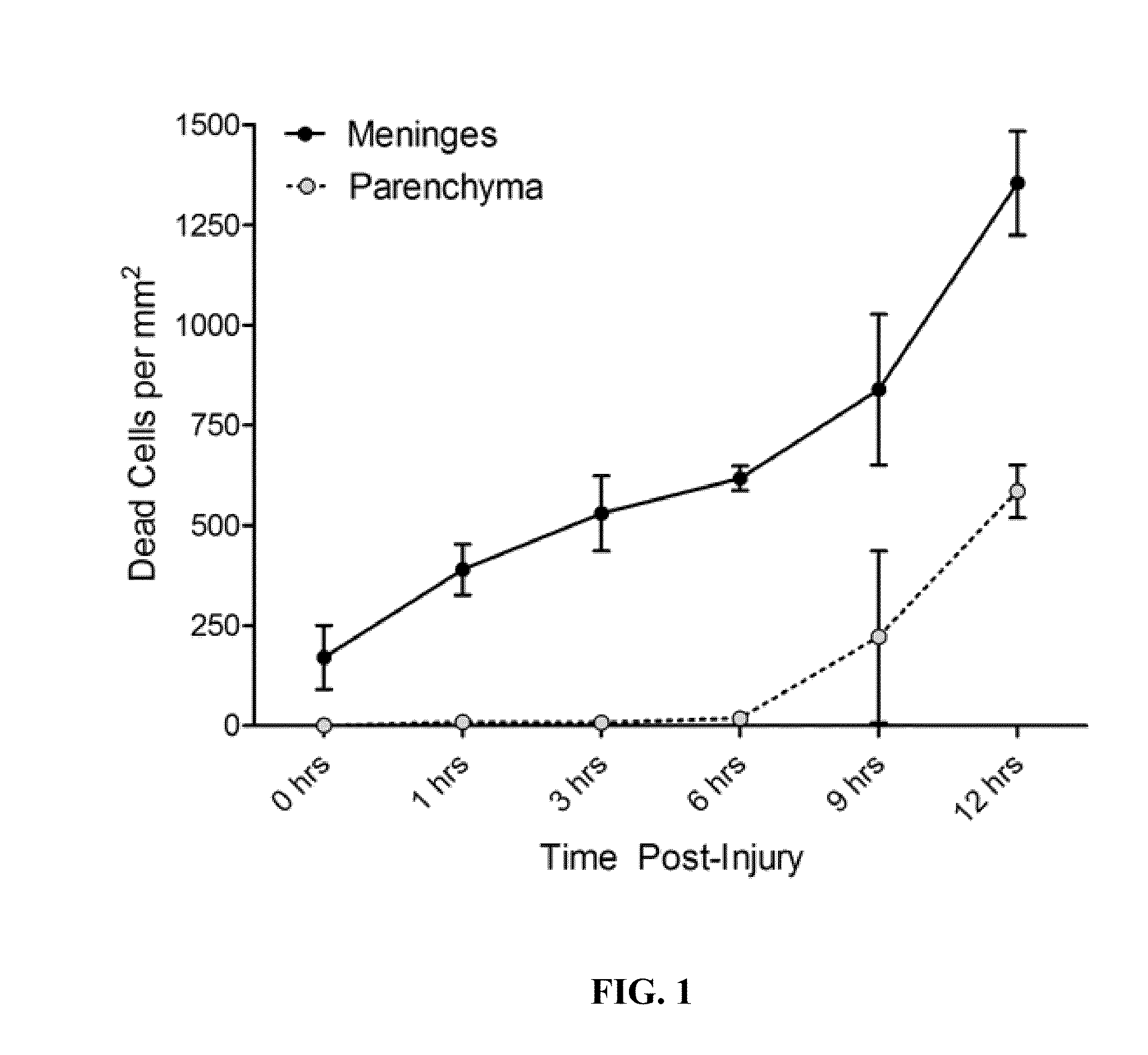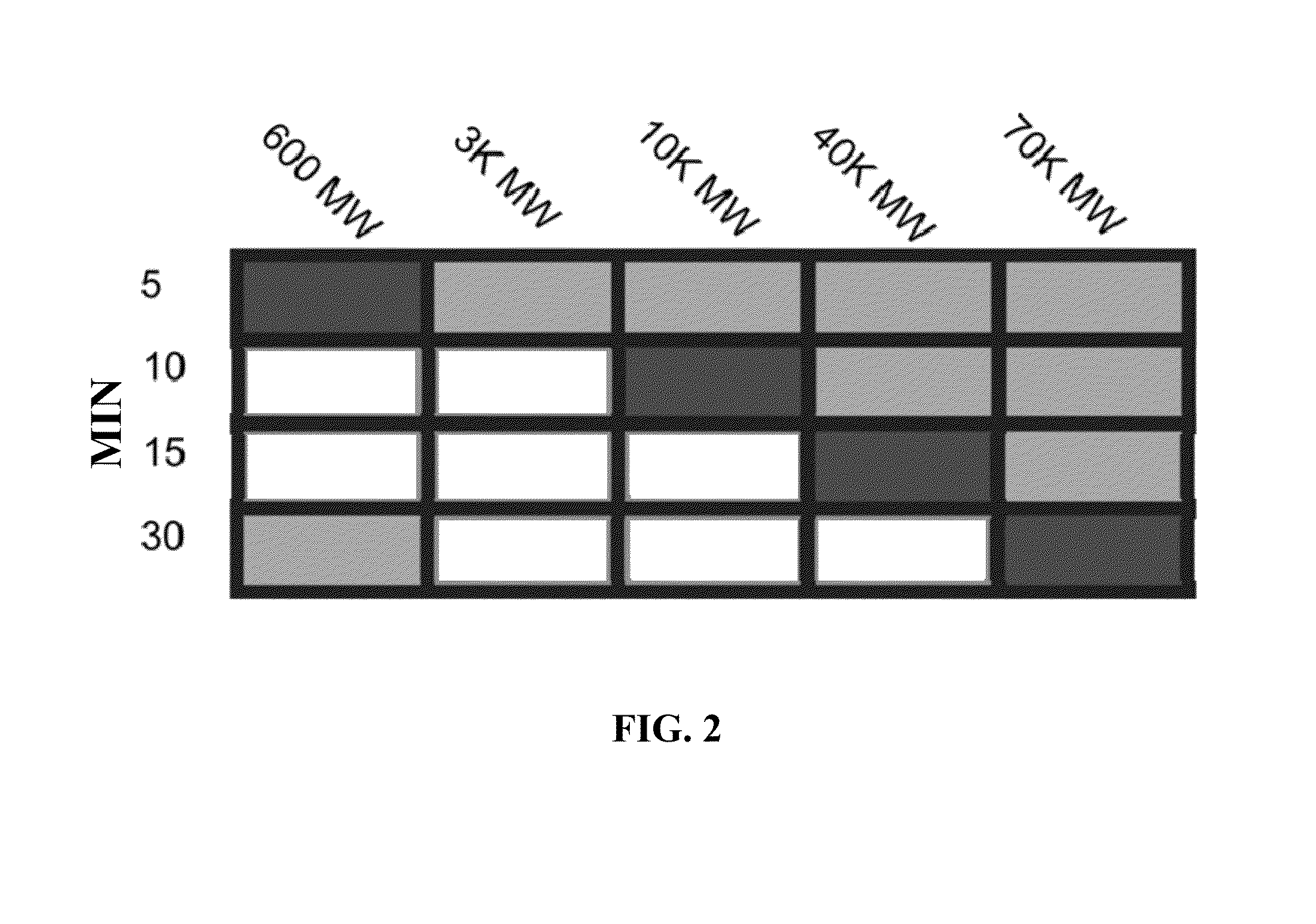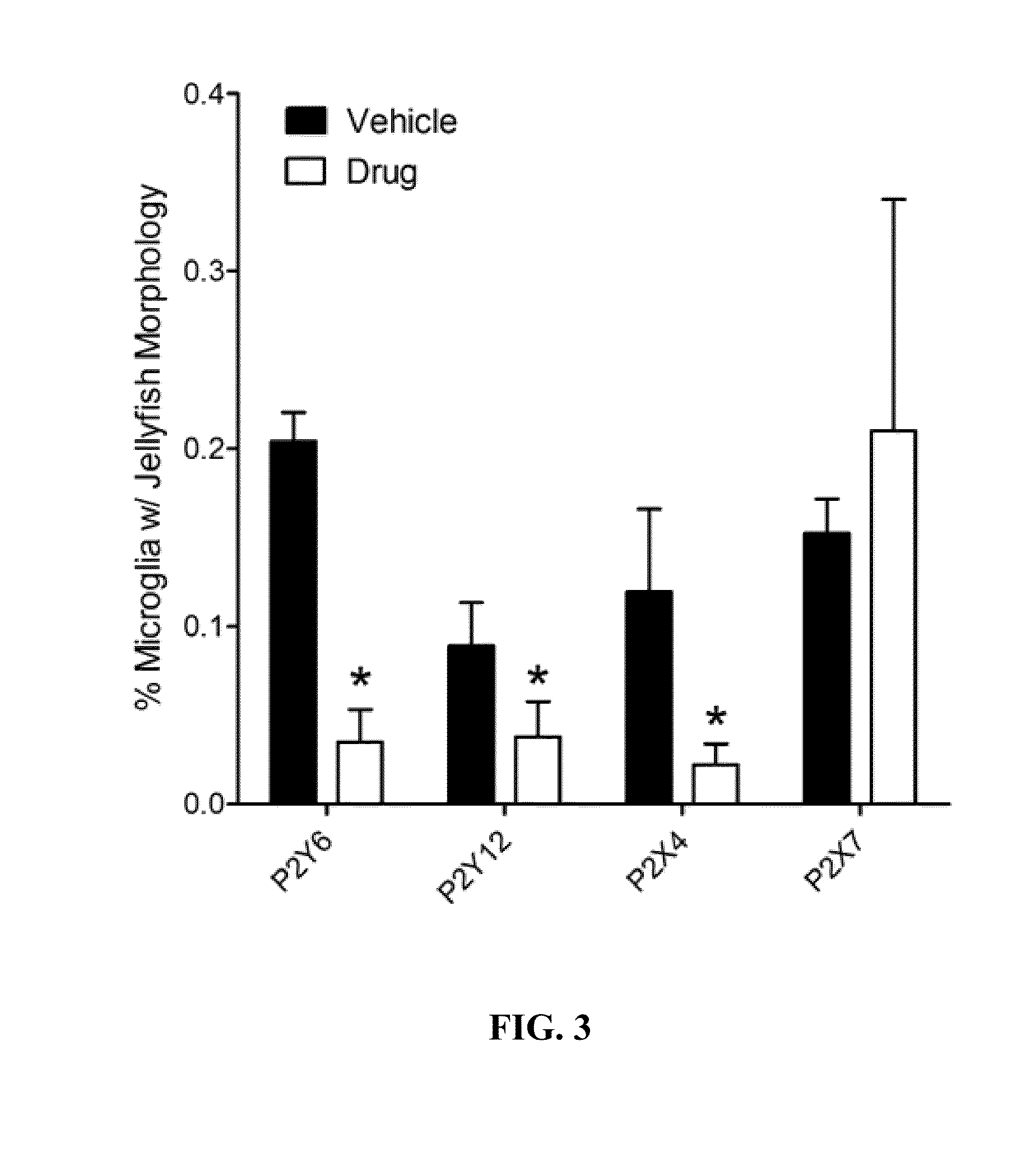Methods of treating and preventing diseases and disorders of the central nervous system
a central nervous system and disease technology, applied in the field of central nervous system diseases and disorders, can solve the problems of increasing the mortality of animals, threatening life, and further secondary cell death, and achieve the effects of reducing the number of dead cells, and rapid elimination of free radicals
- Summary
- Abstract
- Description
- Claims
- Application Information
AI Technical Summary
Benefits of technology
Problems solved by technology
Method used
Image
Examples
example 1
Materials and Methods
[0072]Mice.
[0073]C57BL / 6J (B6) and B6.129P-Cx3cr1tm1Ltt / J (CX3CR1gfp / gfp) mice were obtained from The Jackson Laboratories. CX3CR1gfp / + mice were generated by crossing B6 mice with CX3CR1gfp / gfp mice in a close breeding facility at the National Institutes of Health (NIH). B6 LysM-GFP heterozygous knock-in mice (LysMgfp / +) were generously provided by Dr. Thomas Graf (Albert Einstein College of Medicine) (PMID: 10887140) and maintained at the NIH. All mice were housed under specific pathogen-free conditions and treated in accordance with Institutional Animal Care and Use Committee at the NIH.
[0074]Skull Thinning & Compression Injury.
[0075]For imaging experiments, mice were anesthetized with ketamine (85 mg / kg), xylazine (13 mg / kg), and acepromazine (2 mg / kg) in PBS and maintained at a core temperature of 37° C. The skull bone over the barrel cortex was then thinned to a thickness of ˜30-40 μm as described (PMID: 20134419). For this procedure, the bone was manually...
example 2
[0088]This example illustrates effects of meningeal compression injury in the brain. Mice were anesthetized with ketamine, xylazine, and acepromazine. While under anesthesia, skulls were thinned surgically to a thickness of a ˜15 microns and then lightly pressed downward using a blunt object until the skull bone collapsed, thereby producing a meningeal compression injury. At selected time points following compression injury, 1.5 mM propidium iodide in artificial cerebral spinal fluid (aCSF) was applied for 30 minutes transcranially. This was followed by a single wash with aCSF and then imaged intravitally. For all imaging experiments, a Leica SP5 two photon (2P) microscope fitted with two Mai Tai DeepSee lasers, a 20× (1.0 N / A) objective, a resonant scanner, and a quad external detector array, was utilized. The standard dimensions of a 3D data set were 434 μm×434 μm×100 μm (xyz) with a z step size of 1 μm. For 4D movies, z stacks were collected every 30 seconds. All data sets were a...
example 3
[0089]This example illustrates the effect of molecular weight of the compounds on the rate of transcranial permeation. To define the time and size of compounds that pass directly through the intact (non-thinned) skull, 10 mM SR101 (600 MW) or different sized rhodamine-dextrans (25 mM 3,000 MW; 5 mM 10,000 MW; 1 mM 40,000 MW; 0.5 mM 70,000 MW) were applied to the skull bone. A 3 mm diameter bubble was left on the skull surface for the amount of time noted in minutes on the y axis of the table above. Because all compounds fluoresced, 2P microscopy was performed immediately after transcranial loading to determine if the compounds were present in the subarachnoid space. The results obtained are shown in FIG. 2, where white indicates that a compound was found in the subarachnoid space, whereas black indicates that it was not. Gray indicates that the compound was not tested at the indicated time. Small compounds (e.g. SR101) pass through the skull more quickly than larger compounds (e.g. ...
PUM
 Login to View More
Login to View More Abstract
Description
Claims
Application Information
 Login to View More
Login to View More - R&D
- Intellectual Property
- Life Sciences
- Materials
- Tech Scout
- Unparalleled Data Quality
- Higher Quality Content
- 60% Fewer Hallucinations
Browse by: Latest US Patents, China's latest patents, Technical Efficacy Thesaurus, Application Domain, Technology Topic, Popular Technical Reports.
© 2025 PatSnap. All rights reserved.Legal|Privacy policy|Modern Slavery Act Transparency Statement|Sitemap|About US| Contact US: help@patsnap.com



